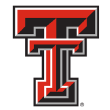The "no great team" narrative is growing louder and louder as the perceived favorites continue to struggle or drop games. It might indeed be true. When the No. 1 team changes multiple times in less than a month, when the preseason favorite loses to Boston College and NC State, when the midseason favorite loses on back-to-back weekends by a combined 26 points, it's hard to argue that there's a clear-cut great team in college basketball this season.
There are plenty of very good teams, however, and it might be a year when we don't see the usual suspects fill up the Final Four.
But can any of them win a national championship? We reached out to coaches who have played some of the top surprises to see if they're true contenders.
Purdue Boilermakers (17-2)

Why they're for real: Despite the loss of Caleb Swanigan from last season, the Boilermakers look like more of a national title contender than in 2016-17. They're experienced, starting four seniors. They're one of the best perimeter-shooting teams in the country, and they have a different dimension this season with Carsen Edwards stepping into the starting lineup in the backcourt.
"When you make a mistake, they capitalize on it," one opposing head coach said. "They are old and balanced. They score at all three levels and shoot it at four spots at all times. They play harder than any Power 5 I have ever played."
Defensively, they have excellent individual defenders -- namely Dakota Mathias -- and they protect the rim with 7-foot-2 Isaac Haas and 7-foot-3 Matt Haarms.
"They are great at guarding the ball," one coach said. "They shrink the floor with their size. They're so big and physical on the glass. They check every box. They play so damn hard."
Why they're not: Purdue doesn't have a ton of depth. Haarms provides quality bench minutes on the interior, but the perimeter players log a lot of minutes, though reserves Ryan Cline and Nojel Eastern have seen their roles increase in recent weeks.
"One injury could shift their rotation," one coach said. "And fatigue could catch them too."
Does Purdue have the next-level players required to win a national title? The Boilermakers have plenty of very good players, but the old adage is that pros win championships.
"You have to have NBA dudes," an opposing head coach said. "You're not beating them with college players. You have to be able to score it, out-athlete them. Pressing them could hurt if they aren't making shots."
Virginia Cavaliers (16-1)

Why they're for real: Virginia is the best defensive team in the country. The Cavaliers control tempo better than anyone in the country. As a result, playing against Virginia is an absolute slog -- and beating them is even tougher.
"You can't score on them," one ACC assistant said. "You have to shoot over the top of them. Their ball-screen coverage is flawless. You can't run any ball screens because nobody hedges like they do. They're so well-coached."
"Tony [Bennett] won't play you until you have a full understanding of the concepts, buy-in and totally commit to that end of the floor," another coach added. "Consequently, they make very few mistakes."
Although Virginia's offense doesn't get as much attention, it's efficient and wears teams down due to the number of screens and actions defenses have to deal with.
"They run the circle motion -- flares, pin-downs, rescreens -- consistently," one coach said. "And they're the best screening team in the country. It's not even close."
Why they're not: Does Virginia score enough to win a title? The Cavaliers don't need to score 70-80 points to win because their defense is so good, but do they have the offensive players to beat good teams in March?
"The offense doesn't allow for much one-on-one, guards breaking down defenders and creating offense," an opposing coach said. "So it can get stale and stagnant, putting too much pressure on the defense. Especially since they don't run either."
Perhaps their lone weakness on the defensive, according to coaches, is transition defense, but teams don't get enough stops to really exploit it. The biggest question could be whether they have the individual stars to take them to the Final Four and whether that even matters.
"It's probably his worst team in recent years in regards to talent," one coach said," but their style is very hard to guard and prepare for."
Oklahoma Sooners (14-3)

Why they're for real: This one is fairly simple. Oklahoma has the best player in college basketball in Trae Young, the nation's top scorer and assist man. Young is putting up numbers we haven't seen in a long time, and his efficiency is on another planet, given his usage.
"Young is the orchestrator of the whole thing," one Big 12 assistant said. "His ability to make deep shots off pick-and-roll stretches your defense, and his ability to make you pay by hitting the open guy makes him a very difficult cover."
Young has had help, though. Brady Manek and Christian James are both shooting better than 40 percent from 3-point range. Kameron McGusty has had big games. Defensively, they have elite rim protectors in Khadeem Lattin and Jamuni McNeace.
"The team is built perfectly around [Young]," one coach said. "And the others perform their roles so well. James makes open shots, McNeace and Lattin rim-run for lobs, [Rashard] Odomes guards, and Freeman and Manek make 3s."
Why they're not: Does Young have enough consistent help? Looking at Oklahoma's losses, it's a lack of production from his supporting cast that has made things difficult for the Sooners. Manek had zero points against West Virginia and six against Arkansas, James had seven against West Virginia, and McGusty averaged 8.5 points in the two losses.
"We know he is going to get his. We try to take away the role players," an opposing coach said. "Manek is key to the whole team."
Young is going to get points and assists regardless, but it is worth noting that he had his lowest assist totals against West Virginia and Arkansas -- Oklahoma's two losses. Also, one coach noted that keeping Young off the free throw line can limit some of his easy points.
"It's hard to trap him in the half court because he makes you pay by hitting the open guy," one coach said. "The best way I think you guard him is to trap him early in the full court and then try to deny him [the ball] back like Arkansas and West Virginia."
West Virginia Mountaineers (15-3)

Why they're for real: West Virginia is at its best when it's forcing turnovers with full-court pressure and crashing the offensive glass on missed shots. It's a recipe that has worked well since Bob Huggins installed his "Press Virginia" system in 2014-15. Since then, the Mountaineers have won 94 games and reached two Sweet 16s.
"They embody their head coach: tough, physical, no B.S.," one Big 12 assistant said. "They are physical, 94 feet, for an entire 40 minutes on both sides of the ball. They pound the offensive glass. This aspect is just as dominant as their press."
This season, though, West Virginia has individual players who can cover up for some of the Mountaineers' other deficiencies. The recent return of Esa Ahmad after suspension should also help with half-court offense -- he has 33 points in his first two games of the season. More importantly, Jevon Carter has emerged as an All-American candidate, hitting career highs across the board.
"They have one of the top point guards in the nation," one coach said. "He is way more than just a tough defender: scorer, leader, distributor."
Why they're not: Everyone seems to know how to beat West Virginia, but that doesn't mean it's easy to do.
"Low turnovers, rebound, make free throws," one coach said.
"They go through spurts where they don't hit shots in the half court," another Big 12 assistant said.
West Virginia has had the same weaknesses for a few years now: When the Mountaineers aren't forcing turnovers with their pressure, they struggle to get points in the half court. They rely heavily on points off turnovers and offensive rebounds to get their scoring. They don't shoot it well from the perimeter. They foul a ton due to their aggressive pressure.
It isn't a surprise that their recent two-game losing streak has coincided with their two worst games of the season in terms of turnover percentage on the defensive end.
Texas Tech Red Raiders (15-2)

Why they're for real: Chris Beard has done one of the best coaching jobs in the country this season, transforming Texas Tech into a Big 12 -- and Final Four -- contender after going 6-12 in league play a year ago. The Red Raiders are an elite defensive unit, forcing turnovers and contesting shots while also controlling the glass.
"They are so versatile and long," one coach who played them in the nonconference said. "They can switch things defensively. That makes things difficult. And they play so freakin' hard. Offensively, they run a five-out motion and all their guys can shoot the 3, so you have to respect it. They curl a bunch of screens and are so athletic. It puts a lot of pressure on the rim."
They brought back many of the same pieces from last season, namely Keenan Evans, one of the nation's more underrated guards. But Tech also added freshman guards Jarrett Culver and Zhaire Smith, who have both added a different dimension to the Red Raiders.
"They have a good mix of experience and youth," an opposing coach said. "Preparing for them on a one-, two-day prep will be really hard. Any time you guard like they do, you put yourself in position to win and win big."
Why they're not: Texas Tech has a lot of different options on the offensive end, but outside of Evans, the Red Raiders have had stretches in which their ancillary options are inconsistent. Moreover, while six players have made double-digit 3-pointers on the season, only one player shoots better than 38 percent from behind the arc, and that's Brandone Francis -- and he has scored in double figures twice this season.
"They have guys that can make shots but aren't great shooters," one coach said.
Tech also doesn't have someone to throw the ball to on the block for easy buckets.
"They don't have a legit post scorer," a Big 12 assistant pointed out.
Wichita State Shockers (15-2)

Why they're for real: New conference, same story for the Shockers. Wichita State is on pace to push for yet another 30-win season, which would be the Shockers' fifth in the past six seasons. Gregg Marshall has a top-25 team at both ends of the floor, plus a legitimate All-American candidate in Landry Shamet. They're very deep, they're very experienced, and they can score in a number of ways.
"They don't turn the ball over, and they really execute," one coach said. "They run a lot of plays, so it's hard to scout. They're a very good cutting and screening team when they're in motion offense. Guys know their roles and don't try to do things out of their character. They get every loose ball. They trust each other on the court. Not overly talented, they just do all the things I said and are consistent with each."
The return of Markis McDuffie could end up being a huge difference-maker for the Shockers. He was an all-league player in the Missouri Valley last season but missed the first part of the season with a stress fracture in his left foot. Wichita State is 6-0 since McDuffie's return, and he has scored in double figures in four straight games since a slow start.
"Besides Shamet, he's their most physically gifted guy," one opposing coach said.
Why they're not: As a team, Wichita State is very good defensively, but opposing coaches say they can be beaten one-on-one or with ball screens.
"They have a couple guys who play a lot that are defensive liabilities," one coach who played them in the nonconference said.
Because Wichita State collapses on drivers to contest shots in the lane, the Shockers can sometimes be susceptible to guards who can create off the dribble and then find shooters. Trae Young had 10 assists, and Oklahoma made 13 3-pointers against Wichita State; Tulsa kept it close recently by hitting 12 3-pointers.
"Attack [Conner] Frankamp. He's their worst defender by far," one coach said. "They struggle with top ball-screen action, especially if you drag it and throw back to a stretch 4/5 at the top. Drive-and-kick them, they swarm to the ball on every drive. The more ball-screen action you run, the less opportunities they have to deny reversals and perimeter passes. You can't deny a ball screen."
